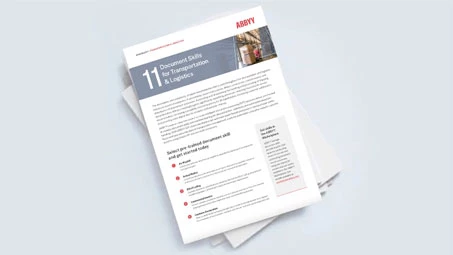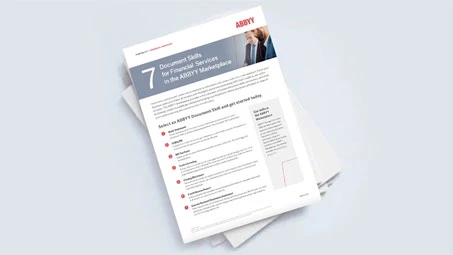
Why AI Matters in LIBOR Transition
Reginald J. Twigg
July 15, 2020

On July 27, 2017, the UK’s Financial Conduct Authority announced that the London Interbank Offered Rate (LIBOR), one of the world's most widely used interest rate benchmarks, will be phased out by the end of 2021.
While officially a UK protocol, LIBOR is used as a reference rate by financial institutions around the world, including the United States, and its impending demise has generated calls to action across the global banking and finance industry. The US Federal Housing Finance Agency, to cite just one example, has announced a comprehensive LIBOR transition plan for Fannie Mae, Freddie Mac, and the Federal Home Loan Banks.
You may ask how such a seemingly little change in a bank protocol can be turning the industry upside down, creating panic and tens of billions of dollars in reviewing contracts and looking for solutions for remediation. The answer is simpler than meets the eye – its because contract language (the place where LIBOR is coded into the business of banking) has become hard-coded in all practices of setting lending rates across all banks doing business with the UK and US.

Combing through this Mt Everest of documents would require armies of trained legal specialists, attorneys, and regulators at a cost of time and money simply impossible to fathom. Oliver Wyman estimates that fourteen of the world’s top banks will pay $1.2B in remediation, while the costs for the industry as a whole will be multiples of that sum. ‘Much of this cost,’ he estimates ‘is linked to the arduous task of changing the terms of contracts tied to Libor whose duration extend beyond the 2021 deadline.’ i
If ever there was a use case for AI with ML
So let’s talk a minute about contract language and how it is holding the banking industry hostage – the trillion dollar question - why consultants are needed and why technology is so important in remediation, and, in particular, why Artificial Intelligence (AI) with Machine Learning (ML) can make its biggest difference as a solution. The answer is simple, even if the solution is sophisticated. LIBOR is embedded in tens of thousands of contracts and agreements by which banks do business with each other, client businesses, and government regulators.
AI with ML has been much hyped in recent years, but it often sounds like a solution looking for a problem. AI, in simple terms, is building computer programs (also called ‘computer vision’) to help them find, interpret, make decisions, and take action on complex language embedded in a corpus of data or documents as expert or highly-trained users would. Far from being a replacement for high-paid skilled labor, such as attorneys, paralegals, analysts and consultants, AI with ML helps them scale to global challenges such as LIBOR phase out.
Named entity recognition & extraction has advanced
A particularly useful application of AI for LIBOR transition is recent advancements in named entity extraction, whereby AI-based programs can learn how to recognize legal entities in the corpus of contracts and related documents. An entity is a specific person, place, and/or action that is composed of multiple data fields that can be found anywhere in a contract. Often implied and never in a predictable place, named entities can be particularly vexing for legal experts to find as they plow through mountains of contracts.
LIBOR rates, clauses, and affected parties are all entities in contracts that are rarely expressed in the same way within a single contract, let alone a single bank’s thousands of such contracts. But AI with machine learning can learn all of the permutations of these entities, including all of the stated and implied references to such entities, but can identify and understand them in seconds on a machine while a legal expert could take an hour or more to perform the same review. But AI does not get tired or distracted, like humans can, and can deliver results more consistently across thousands of documents.

With recent advancements in named entity recognition and extraction techniques, such as the ability of data scientists and legal experts to train the software with comprehensive taxonomies and variations (thesaurus, legal codes, aliases), modern AI solutions can be in production in a matter of days or weeks at a fraction of the cost of hiring an army of consultants and legal teams to do the work. LIBOR remediation experts can now help train their ‘virtual legal team’ of AI/ML software and supporting RPA bots to be their army of expert assistants to find, remediate, or flag for additional review all the impacted contracts and legal business entities.
Here is where AI with ML can shine as an expert solution for LIBOR transition. By supplementing and learning how to work as an army of virtual assistants, a specialized named entity recognition solution, powered by modern AL with ML, can reduce the time of locating, understanding, and remediating the sheer volume of LIBOR-related documents from tens of person years to weeks or months of computer time. The payback in risk abatement, time, and money can speak for itself.
Watch for our webinar, Mitigating risk from LIBOR contracts, to see a demo of how AI technologies can be deployed to identify and remediate LIBOR contracts, to monitor and audit processes, and to gain key takeaways on how to lead your LIBOR transformation initiatives.
i Sinead Cruise, Lawrence White, ‘The End of LIBOR: The Biggest Banking Challenge You’ve Ever Heard Of,’ Reuters 8 October, 2019.






